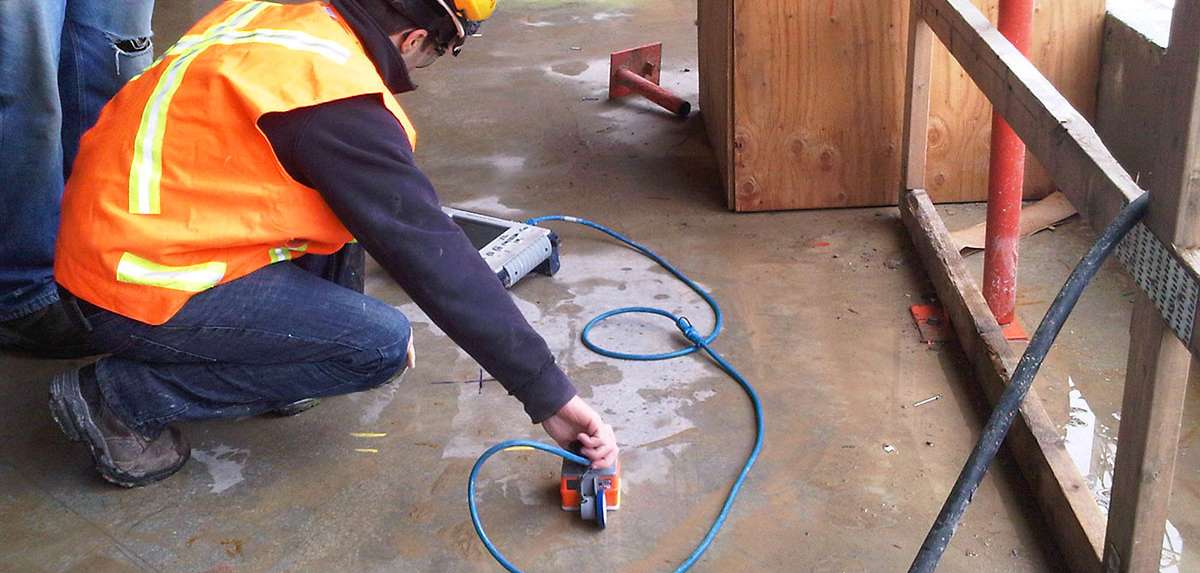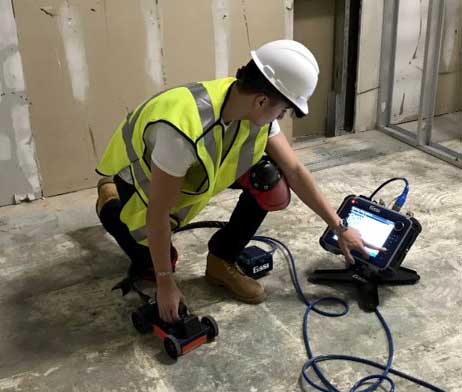Harness the Strategic Side of Concrete Scanning for Unparalleled Job Success and High Quality Guarantee
In the realm of contemporary building and framework growth, the application of concrete scanning technology has arised as a pivotal device for making sure task success and preserving top quality criteria. The true power of concrete scanning lies not only in its capability to boost project end results yet also in its ability to revolutionize conventional techniques, setting a new standard for precision and effectiveness in the building and construction industry.
The Importance of Concrete Scanning
Concrete scanning is a crucial action in building jobs to guarantee the safety and security and stability of structures. By making use of various scanning modern technologies such as Ground Passing Through Radar (GPR) and electromagnetic induction, building teams can non-destructively review the subsurface of concrete structures to recognize potential dangers like rebar, avenues, or post-tension wires. This details is important for task supervisors, designers, and professionals to make educated choices and prevent costly errors during the building and construction process.
Among the primary reasons that concrete scanning is so essential is its capacity to stop mishaps and injuries on the construction site. Inadvertently puncturing a live electrical channel or damaging post-tension wires can have disastrous effects, not only in regards to safety and security however additionally in terms of task delays and financial effects. By performing detailed concrete scanning prior to any type of drilling, reducing, or coring activities, building teams can minimize threats and create a much safer working environment for everyone included.
In enhancement to security considerations, concrete scanning also plays a key role in ensuring the long-term durability and quality of the framework. By finding any kind of flaws or anomalies hidden underneath the surface area, such as gaps or delamination, early intervention can be executed to resolve these problems prior to they rise right into more substantial issues. Inevitably, buying concrete scanning is a proactive action that can save time, cash, and sources in the lengthy run, while likewise promoting the greatest criteria of building quality.
Advanced Technology for Specific Results

Furthermore, 3D scanning technologies provide an extensive sight of the subsurface environment by creating thorough electronic models. These designs offer beneficial insights right into the structural integrity of concrete aspects and help in determining potential weaknesses before they escalate into major concerns. By incorporating these innovative technologies into concrete scanning methods, construction teams can streamline operations, decrease job hold-ups, and make sure the overall top quality and success of the job. The accuracy and performance used by these devices contribute significantly to the job's success by facilitating notified improving and decision-making high quality guarantee measures.
Enhancing Project Performance and Timelines

Additionally, concrete scanning enables teams to determine structural weak points and possible hazards early on, enabling for punctual removal and preventing accidents that could derail job timelines. The real-time data provided by scanning devices promotes educated decision-making, causing smoother sychronisation amongst various professions and stakeholders. This enhanced collaboration minimizes disputes, enhances productivity, and inevitably accelerates project distribution.
Additionally, by proactively resolving concerns with concrete scanning, building teams can comply with timetables much more efficiently, minimize downtime, and enhance resource allowance. The capacity to spot surprise barriers and confirm architectural honesty efficiently adds to general project performance and timelines, making certain successful end results and customer contentment.
Ensuring Safety and Threat Reduction

Danger reduction methods can be boosted with the detailed information offered by concrete scanning, allowing task groups to make informed choices that minimize the likelihood of unexpected events. Furthermore, by accurately drawing up subsurface conditions, specialists can avoid pricey rework, hold-ups, and damage to existing frameworks, further adding to general job safety and security and success. Applying concrete scanning as a routine method not only makes certain a much safer workplace yet likewise instills self-confidence in stakeholders pertaining to the job's dedication to quality and threat administration.
Quality Control Via Concrete Scanning
Concrete scanning plays an essential role in supporting top quality assurance criteria within building jobs. By using sophisticated scanning modern technologies such as Ground Passing Through Radar (GPR) and Concrete X-ray, project supervisors and engineers can ensure the stability and high quality of concrete frameworks. With concrete scanning, potential problems, such as voids, splits, or strengthening bar blockage, can be detected non-destructively, enabling timely treatments to maintain the structural honesty of the job.
Quality control with concrete scanning not only assists in determining existing issues yet likewise allows proactive steps to protect against future problems that can endanger the safety and long life of the framework. By conducting detailed scans at key stages of construction, teams can verify the accuracy of architectural strategies, validate the positioning of critical aspects, and attend to any kind of discrepancies without delay. This proactive strategy lessens rework, decreases expensive hold-ups, and inevitably leads to the shipment of top quality, sturdy frameworks that meet or go beyond sector requirements.
Conclusion
To conclude, concrete scanning plays an essential function in making sure job success, check my reference safety, efficiency, and quality assurance. By using innovative technology for accurate results, building projects can be finished with greater precision and within timelines. The strategic side offered by concrete scanning permits positive danger mitigation and enhances total project management. Including concrete scanning into building processes is crucial for accomplishing exceptional success and ensuring high quality outcomes - RainierGPR Concrete Scanning.
In the world of modern building and facilities development, the use of concrete scanning modern technology has emerged as a critical tool for guaranteeing task success and keeping top quality requirements. By incorporating these sophisticated innovations right into concrete scanning methods, building and construction teams can enhance workflows, minimize project delays, and make certain the total high quality try here and success of the job.Given the critical nature of project efficiency and timelines in construction monitoring, the emphasis currently moves towards guaranteeing security and mitigating risks within the task atmosphere.Concrete scanning plays a pivotal function in upholding top quality guarantee criteria within building and construction tasks. By making use of sophisticated scanning innovations such as Ground Passing Through Radar (GPR) and Concrete X-ray, job supervisors and designers can ensure the stability and top quality of concrete frameworks.